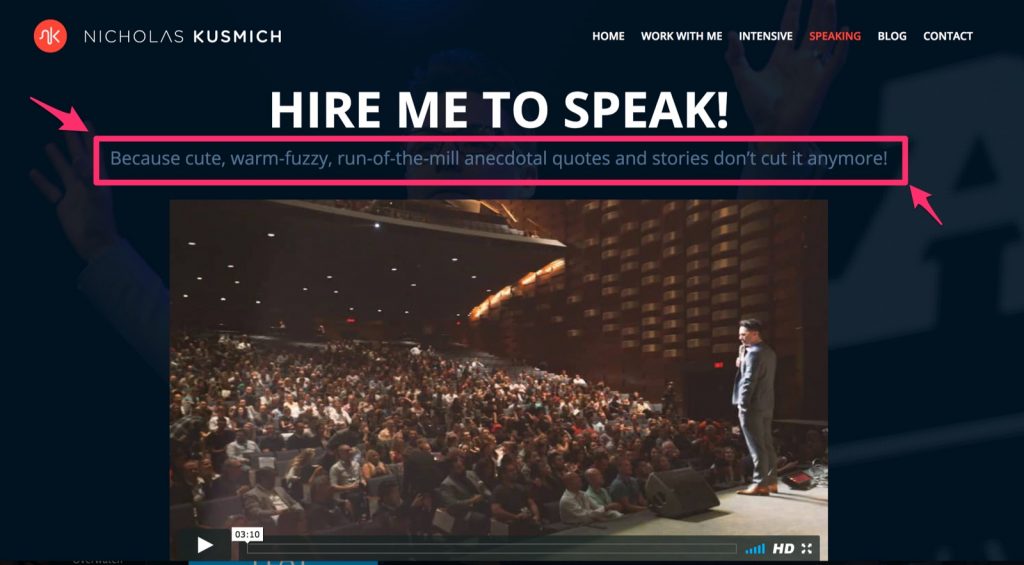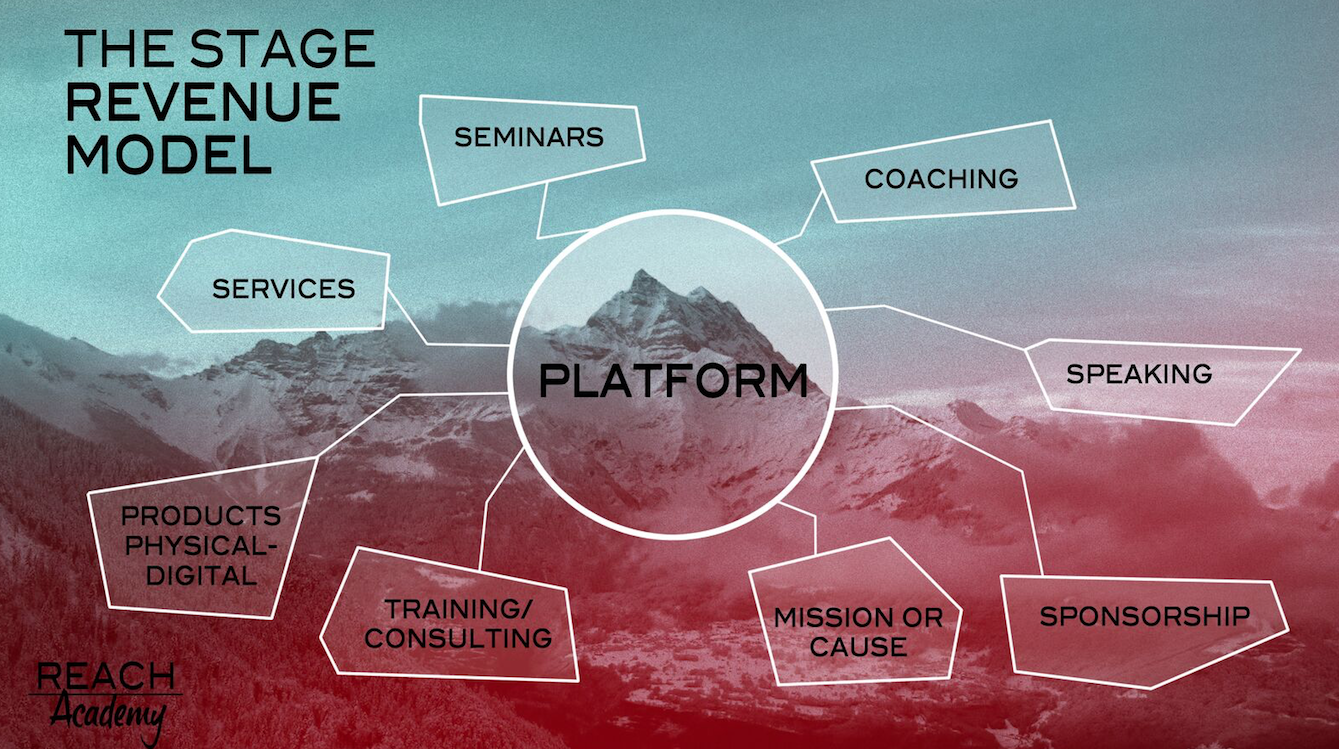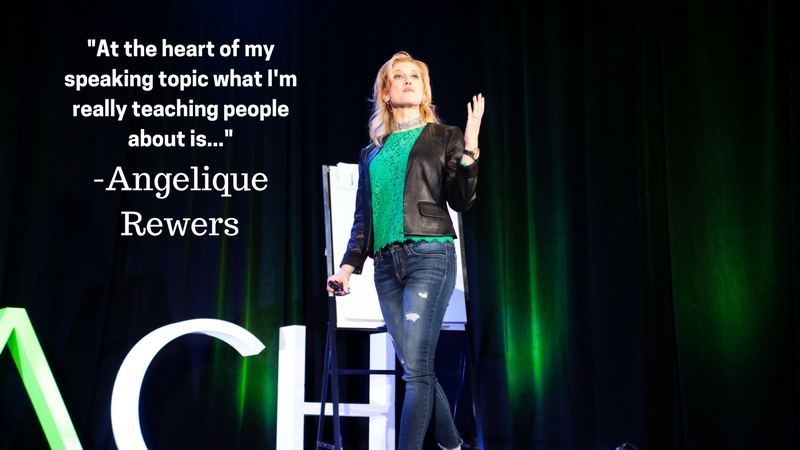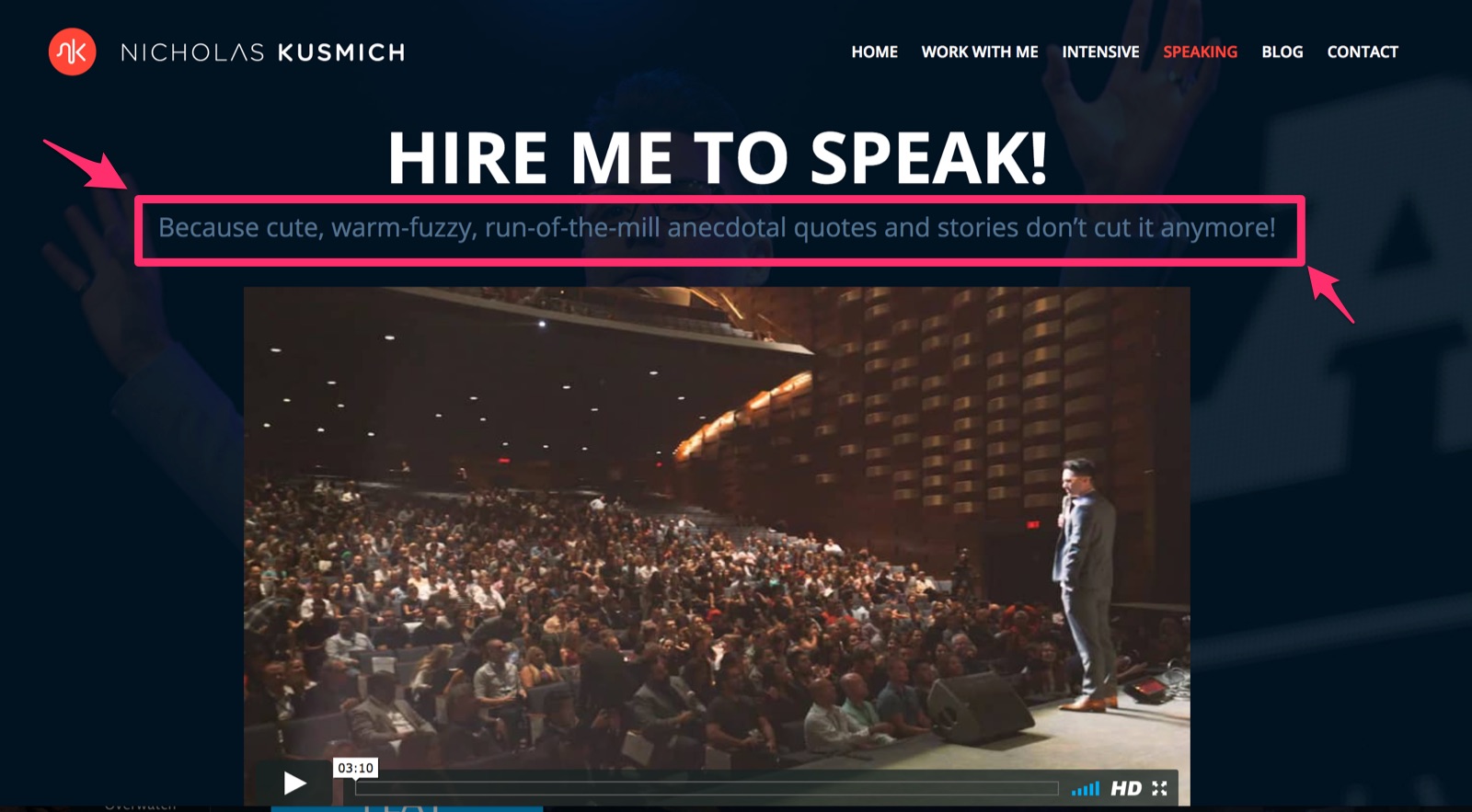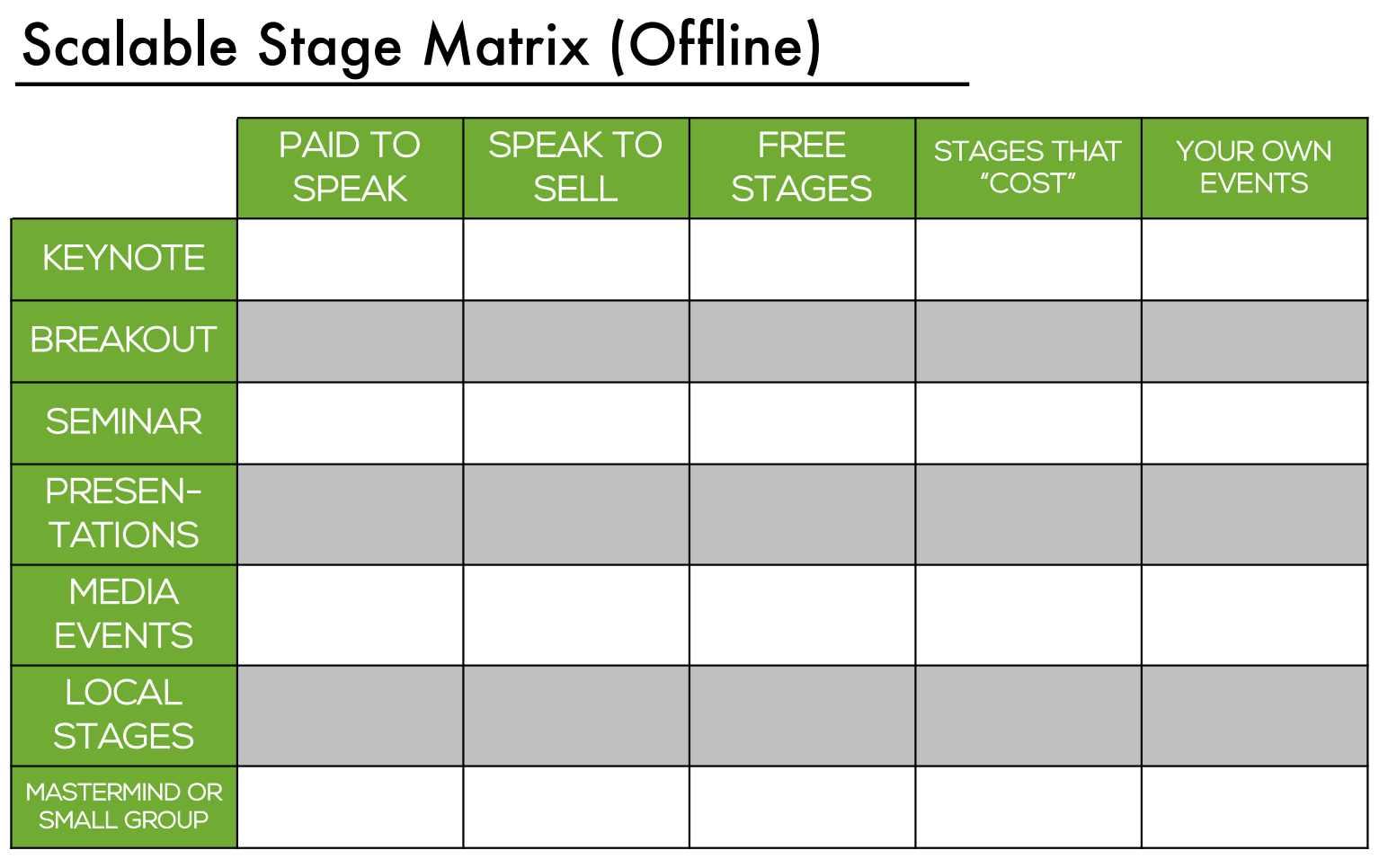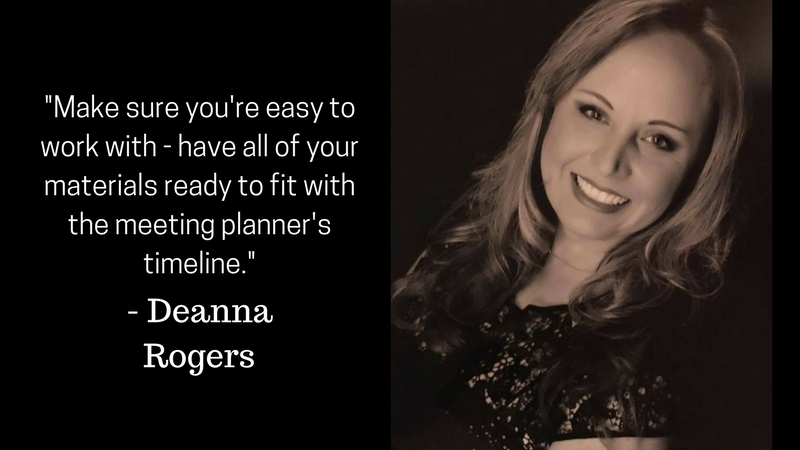A speaker page is essential for anyone looking to land stages and grow their business with speaking. While most of your stages will come from your outreach, it’s important that you have a page ready where meeting planners can find, learn about and contact you with speaking opportunities.
But what exactly do you need on your speaker page to make yourself irresistible to meeting planners?
Before You Start Building Your Speaker Page
Before you build out your speaker page, you need to understand your positioning in the market. That is, you need to know what meeting planners and your customers desire, and be able to clearly communicate how you can deliver that.
Your story goes beyond the stage–it plays a crucial role in your positioning. The story of you, who you are, what you do, and why you do it is essential for mastering how you position yourself and how you present yourself to meeting planners and your customers. Check out 5 Steps To Great Brand Storytelling With Chris Smith to learn more about building an amazing brand story.
Eye Catching Headline
Just like landing pages selling a product, you need to have an eye-catching and enticing headline right at the beginning.
You can use the same tactics the best marketers use to sell their products to sell yourself as a speaker.
Promo Video
Your promo video will probably be the first thing the meeting planner engages with after they see your headline. This video should be high-energy and show off the best aspects of your personality and the value you bring to your audiences.
Here’s an example of a promo video:
A promo video should have 4 main components:
- Professional Quality – This is not an area where you need to go cheap or use your iPhone. A general ballpark for what you should expect to spend on something like this is $1,000-$5,000. They usually take a few hours to shoot, and the finished product should be about 2-5 minutes long.
- Problem Solving – This is where your positioning is essential. You need to build credibility by demonstrating that you understand the meeting planner and their problems (finding great speakers). You also need to show you know the audience of the meeting planner, how to solve the problems they’re facing, and the world they live in.
- Engaging – Your video needs to be exciting, fast-moving and interesting. By paying for professional quality editing, you can get good editing and music in the video to help it stay interesting. The key to keeping it engaging is always to be laser-focused on the needs and desires of the meeting planner.
- Leave them wanting more – You want to give enough that you show you’re an expert, but you don’t want to reveal all your secrets and content in the video. Think of your video as a movie trailer. It gives you enough to want to see the movie, but not enough to give away the whole story.
Your promo video is a great place to test out your signature sentence. A signature sentence is your entire story and signature talk distilled into one crisp sentence. It makes for a perfect opener that explains what you do and catches the attention of the meeting planner from the beginning.
Here’s the basic formula for a signature sentence:
I [action] [who] to experience [what] so they can get [result].
Here are a few examples of signature sentences put together by attendees of Reach Academy Live.
About You
You want to include 2-3 paragraphs of text about yourself. Most people are tempted to just write out their own story and history here, but remember, the “about me” section is never really about you–it’s about the meeting planner.
In other words, don’t just spout out your whole life’s story here–make sure that every sentence in your about me section speaks to these three things:
- The event planner’s problems
- Show you understand their audience
- Why you’re different
Let’s break down a sample from LaVonna Roth’s speaking page and see how she tackles all three of these points in just two sentences:
“Highly energetic and dynamic, LaVonna Roth is an internationally recognized keynote speaker, consultant and author, bridging how the brain learns (and thinks), with people’s incredible intrinsic skills and talents (how they S.H.I.N.E.) is her deep passion. Her goal is to help individuals become confident in who they are, and for them to use that aptitude in making a difference within their communities.”
“Highly energetic and dynamic, LaVonna Roth is an internationally recognized keynote speaker, consultant and author,” – A meeting planner’s biggest fear is getting a dud speaker, and this line gives social proof that she’s experienced and entertaining.
“Bridging how the brain learns (and thinks), with people’s incredible intrinsic skills and talents” – This touches on why she is different by combining learning and talent in a unique way.
“Her goal is to help individuals become confident in who they are, and for them to use that aptitude in making a difference within their communities.” – This speaks to the desires of the audience. She’s showing here that she knows what they want and can help them get it.
Popular Speaking Topics
If you only have one signature talk developed, try to write descriptions for several versions of your talk that emphasize different aspects of it. Even if it’s largely the same talk, you give the meeting planner a sense of choice in the matter, and their choice can help guide you on what to focus on for their audience and event.
Videos Of Recent Talks
Though you should have footage of you speaking in your promo video, it will probably just be short clips of you talking. Many meeting planners want to see uncut footage of you speaking, not just a “sizzle reel.” This gives them a better idea of what you’re really like on stage, and that you didn’t just edit clips together to make yourself look good.
You don’t need to have a video of a full talk up, especially if it’s a 30 or 60-minute talk. Just pick out a solid 5-minute clip to post from one of the strongest sections of your talk. Try to get clips of yourself being energetic, engaging the audience, or sharing some of your best ideas.
Downloadable Speaker Packet
A good speaker packet will say many of the same things your page will say but in a printable format. Many people still prefer to have something they can hold in their hands, share at meetings, and compare side-by-side with other sheets. By having this packet available for download, you signal you understand the meeting planner and how they work.
Here’s a great example of a speaker sheet from Chris Smith.
This can be the same speaker sheet you use as part of your Speaker Box. I recommend having a “printer-friendly” version of your packet available, too.
Social Proof
Social proof is crucial on your speaker page because it helps put the meeting planner at ease. They don’t want to risk giving away a keynote slot to someone who is inexperienced, or who may bomb on their stage. Social proof shows that you’re experienced and backs up the statements that you make in your promo video.
There are many different ways to approach social proof on your speaking page. If you’re just starting out speaking, you may not have many of these things yet. So make sure you start collecting this information to build out your social proof as soon as possible.
Logos from events
If you’ve been speaking for a while and have landed some big-name stages, using the logos of the events where you’ve spoken is a powerful way to show your experience.
Testimonials from hosts
The next level of this is to get testimonials from hosts of the events. This is great because it can not only point out how great of a speaker you are, but the hosts can also talk about how easy you were to work with behind the scenes, which is also a big concern of meeting planners.
Ratings
Most events hand out surveys at the end of the event where they rate speakers, what they liked, what they didn’t, and what they want more of. Using this can be a powerful form of social proof because many meeting planners are doing everything they can to keep their event highly rated.
Most meeting planners are happy to share any rating data they collect on you. Sometimes there’s even comments and feedback that you could use.
Speaker Request Form
If the rest of your speaker page does its job right, then the meeting planner you’re speaking to is going to want to reach out to you to talk about putting you on their stage. Make it easy for them by putting a speaker request form at the bottom of your page that collects the essential information about the event.
Here’s what your speaker request form should include:
- Name
- Event website
- Date and location
- Preferred topics
- Describe the event
- Anything else I should know?
Follow Up Email Sequence
Once someone fills out your speaker request form, you should have an automated email series ready to start messaging them right away. Though you can’t depend entirely on automation to get you stages, you can have a sequence set up to make it easier for you.
You can have email set up to provide additional information about yourself, request more information from the meeting planner to further qualify them, or send them a link to book a call with you or your team.
Email automation is one of our favorite outreach strategies and a key element of The Unstoppable Stage Campaign.
Personalizing Your Speaker Page
Once you have your speaker page developed, it’s easy to make copies of it and personalize them for your dream stages. For the high-priority events on your “dream stages list,” you may want to go the extra mile and tailor your speaker page to those events.
Meeting planners are bombarded with cheap pitches from speakers all day. Most of the time it’s clear they didn’t put more than 5 minutes into copy/pasting an email template and sending them the same thing they just sent 100 other planners.
By creating a personalized speaker page, you can create a very personal feel for the meeting planner without having to reinvent the wheel every time you create a page. This can make you stand out from the many other speakers trying to get on that stage.
- Use the name and language of the event – Talk about the mission of the event on your page and align your topics and values.
- Use the name of the meeting planner – If you’ve done your research on the event, you should know the meeting planner in charge of the event.
- Mention testimonials from similar events – You can focus your testimonials to address the most relevant information to that specific meeting planner and event.
- Tailor your keynotes to the audience – You can modify the title and descriptions of the talk to be extra focused and relevant for the specific event and their audience.
Conclusion
Treat your speaker page as a landing page that sells yourself and your story as the product. Always keep the focus of the speaker page on the meeting planner and their audience. With time, this may become one of the most valuable pages on your website.

